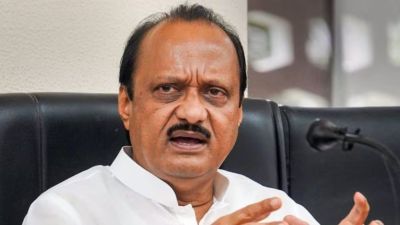Borrowing abroad: Lessons in search of ‘golden mean’
From low single digits three decade ago, foreign commercial borrowings now constitute over 38% of India’s external debt of over $ 470 billion, reflecting the changes in the economy.
 Late last year, RBI Governor Raghuram Rajan said “it is easy to fall to the temptation of easy money from outside and then get into problems later. There is a need for the golden mean.”
Late last year, RBI Governor Raghuram Rajan said “it is easy to fall to the temptation of easy money from outside and then get into problems later. There is a need for the golden mean.”
A few years after the government announced the end of industrial licensing as part of the opening up of the economy, a joint secretary in the Ministry of Finance returned from leave to find a proposal for approval submitted by one of his junior officers. The proposal was by one of India’s top companies for a huge borrowing in foreign currency, and had been cleared by the Finance Secretary. But what shocked the joint secretary was the fact that it was a proposal that he had rejected, but which had been approved while he was away. The officer confronted his junior colleague — and a year or so later, after this young official moved out, his successor realised that the same top corporate, a prominent borrower in the international markets, had violated rules on raising debt overseas. The company had raised a huge amount through foreign loans and parked it abroad instead of bringing it to the country. Bureaucrats suspected that the company had misused the funds, and there was a proposal to bar it from accessing foreign funds and imposing monetary penalties. It took a couple of brave bureaucrats to propose action against this hugely influential corporate, but given its clout, it was back to the market for such borrowings after being benched for a while.
In the 1990s and the early part of 2000, corporates and Indian financial institutions lined up in North Block to lobby for approval to raise foreign currency abroad, as it was cheaper to borrow overseas with local lending rates in high double digits. This was also the phase in which Indian companies were getting exposure to international markets — by offering stocks to foreign investors, and getting listed overseas. And with greater foreign inflows — both FDI and from foreign investors buying into Indian stocks — the government started liberalising its restrictive policy on foreign or external commercial borrowings by Indian companies abroad.
[related-post]
The beginnings were made in the early 80s. As India hosted the Asian Games in 1982, there was need to build infrastructure — and borrowings were allowed. What prompted the government to open up this window a little more was the lowering of aid on a concessional basis by multilateral lenders. India was a major recipient, and such flows were needed to bridge the current account deficit. The choke forced the government to look at international commercial markets for borrowings on a case-by-case basis. By 1983-84, approvals reached Rs 1,700 crore as state owned companies started raising money — and by 1987-88, it rose further as private firms too started tapping the markets. In those days of cheap borrowings in the Japanese markets, state-owned companies were frequent issuers — in the Samurai or public bond market — and also in other currencies such as German and Swiss. The trend soon expanded to short term borrowings by India’s state-owned oil companies such as Indian Oil and ONGC, for importing oil. This was the Bankers’ Acceptance Facility for the short term — which, after the Gulf war of 1990, foreign lenders refused to extend, leading to a crisis, as India’s sovereign rating had been downgraded.
Public sector companies were then a vehicle for the government to borrow as India was — and still is — one of the few countries that did not borrow or issue foreign currency debt, even if it meant that those companies didn’t need those funds. The 80s were marked by relatively high growth, though at the cost of macroeconomic prudence, which ultimately built up to the crisis of 1991. Indeed, in December 1988, RBI Governor R N Malhotra wrote to Finance Minister S B Chavan warning of a balance of payments crisis, while acknowledging that inflows in the form of commercial borrowings and concessional aid had helped finance the current deficit. And as access to the international markets started getting restricted for Indian companies with the rating downgrade, the rollover of debt also became difficult — forcing officials both in the Ministry and the RBI to monitor foreign exchange transactions on a daily basis for a few months at the peak of the crisis in 1991, including arbitrary rationing.
After the crisis was handled, policymakers started focusing on India’s external debt, and on building a policy framework for borrowings abroad based on benchmarks such as debt sustainability, the level of foreign exchange reserves, the maturity of the loan and the level of debt as a percentage of current receipts, and also to GDP or national income, with a Committee on Balance of Payments headed by C Rangarajan. A feature of the policy then — and which prevails now too — is the ceiling on debt contracted for less than a year. By the mid-1990s, more private firms started raising foreign currency — and a rise in foreign exchange, plus lobbying by top Indian firms, prompted the government to raise the ceiling progressively. Many of these firms were into large projects in core sectors, with huge borrowing needs. The scramble by corporates was also because of an annual quota on foreign borrowings which the government imposed as a prudent measure. Early in the fiscal, large corporates with well-oiled lobbying mechanisms in Delhi submitted multiple proposals and secured approvals — leading to the annual quota for overseas borrowings being exhausted by the middle of the year. For the Finance Ministry, it was a challenge to assess the demand for borrowings annually, forcing the government to ration it. The approach then was to also look at the quality and track record of the companies that sought to borrow abroad.
As India started building its foreign exchange reserves, policymakers started liberalising — and allowing smaller issuers too to tap the market — and engaging with RBI for a change in approach. For long, it was like licensing — which prompted a rethink, with the Finance Ministry favouring delegating powers to RBI to approve borrowings and for automatic clearance or approval. By 2004, as India’s forex reserves topped $ 100 billion, the government delegated more to the RBI — and the limit of automatic approval without going to the central bank except for post facto clearance, was raised progressively. The government didn’t give in to demands for allowing borrowing for real estate projects until later, when the window was opened for townships.
From low single digits three decade ago, foreign commercial borrowings now constitute over 38% of India’s external debt of over $ 470 billion, reflecting the changes in the economy. Late last year, RBI Governor Raghuram Rajan said “it is easy to fall to the temptation of easy money from outside and then get into problems later. There is a need for the golden mean.” He went on to buttress that point recently, saying that as a second line of defence, India had taken measures such as being careful about foreign borrowings, especially in the short term. Indian policymakers appear to have learnt from the lessons of the past.



- 01
- 02
- 03
- 04
- 05



































